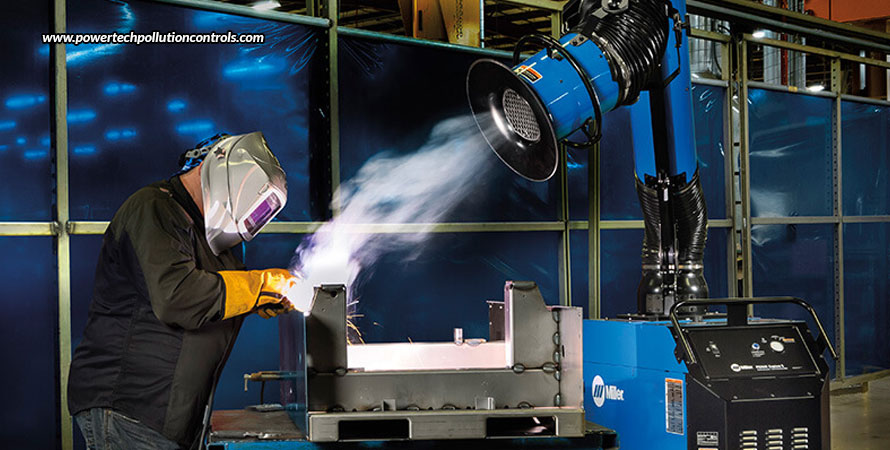
Low Vacuum Vs. High Vacuum Fume Extraction
Solid particles, which are produced when metallic vapours condense, are present in the fumes generated by welding procedures. Aluminium, iron, and titanium are just a few examples of the metals found in many of these particles that are known to induce lung illness, while other elements like copper, lead, manganese, nickel, and zinc could possibly induce pulmonary inflammation, and/or systemic toxicity. Additionally, base metal residue and coatings, as well as cutting techniques like plasma or laser cutting, can emit fumes. The welder is more susceptible to fume exposure due to his or her proximity to the fume source. However, fugitive emissions might also have an impact on other employees. To eliminate such harmful exposure, an efficient source-capture welding fume extractor should be installed, which can significantly reduce the amount of particles that enter the atmosphere and propagate throughout it. Such fume extraction systems use low vacuum or high vacuum to accomplish the task.
Low vacuum fume extraction
Low vacuum fume extraction frequently involves the employment of extraction arms. They function similarly to a stove’s range hood in removing large amounts of air at a low speed. A hot fume is produced spontaneously when many industrial procedures, such as welding or cutting, are performed. The extraction arm hood can be positioned horizontally facing the fume source, above the welding station, or across from the welder on the welding table. The welder has additional workspace because of the separation between the source and the extraction point. Low vacuum fume control systems have the additional advantage of working with existing welding tools that do not already have, or cannot be fitted with, on-tool extraction systems. In addition to extraction arms, backdraft tables, downdraft tables, and ventilation hoods are occasionally used to pull dangerous vapours away from the welder. However, these devices require big fans, which consume more energy.
High vacuum fume extraction
The larger, faster-moving particles that are typical of different types of dust, and industrial activities like grinding or sanding, are frequently captured by high vacuum fume control systems. High vacuum, however, is also very helpful for capturing welding fume emissions. High vacuum provides the additional benefit of freeing the welder from having to continually move a hood, increasing freedom and efficiency. High vacuum has an additional benefit over low vacuum that it can be utilized in factories and workshops as a general housekeeping system. Welders have the option of welding while capturing the fume, grinding while capturing the dust, and then cleaning the work area with regular vacuum nozzles and cleaning supplies.
Why capture fumes at the source?
There are various advantages to collecting welding fume particles right at the source, whether it is through low vacuum or high vacuum extraction.


